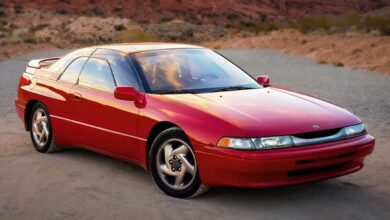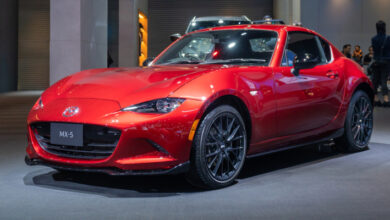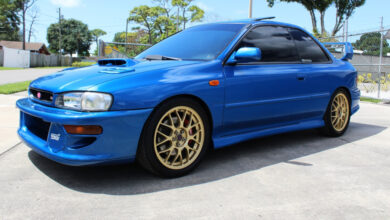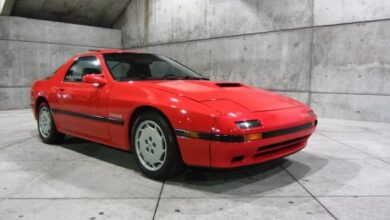Styling the 1982 Toyota Celica Supra for Success
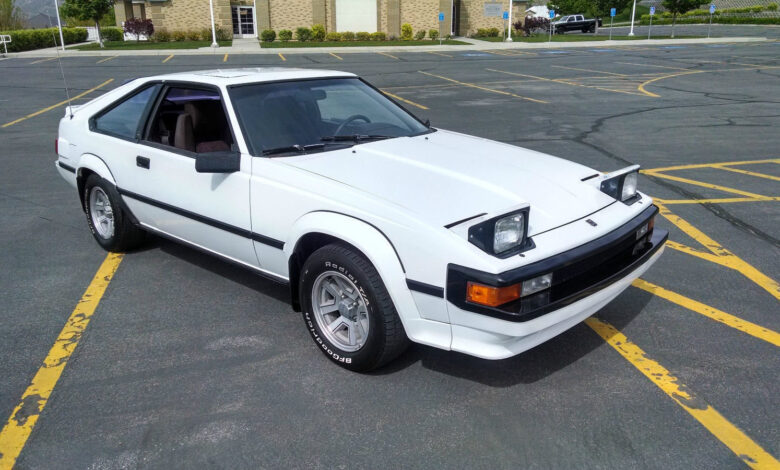
After discovering success with the first-generation Celica Supra, Toyota redesigned their sports car in 1981. They launched the second generation with the 1982 Toyota Celica Supra using the A60 platform. In Japan, the Supra was still the Celica XX for this generation.
Many stateside fans assume the ‘82 Supra is the first generation of the segment because they have never seen an XX. However, the 1982 version actually marks the beginning of the Supra’s second run. It shares the front-engine, rear-wheel-drive layout of the previous generation.
Following in the shadow of the historic 2000GT, Toyota continued the inline 6-cylinder lineage with the second-gen Supra. In North America, 1982 Toyota Celica Supra models feature a 2.8L inline-6 under the hood. It produces 145 horsepower with 155 pound-feet of torque.
In its stock form, the 1982 Supra can go from 0 to 60 miles per hour in 9.8 seconds. It will complete the quarter-mile in 17.2 seconds with a trap speed of 80 miles per hour. Keep in mind, this is before Toyota introduced forced induction to the Supra.
Many in the Supra community love swapping fourth-generation engines into older body shells. Others prefer tuning the potential out of the factory setup. These days, all-original models are quite desirable because so many tuners got their mitts on Supras over the years.
In the end, there is no wrong way to Supra. As competitive as drivers can be, Supra enthusiasts always share their fellow admiration with a family-like bond. There is a ton of aftermarket support for Supras and a wealth of information available on tuning them.
As for standard equipment and features from the factory, Toyota included power windows, locks, and exterior mirrors. Automatic climate control was also a standard feature in the second-generation Supra. Some of the available options included a sunroof and a five-speaker stereo system.
There is also a retractable map light in the 1982 Supra. One way or another, this car will tell you where to go. For most drivers, the open road navigates the journey but the light helps if you hit a GPS dead zone.
Do You Want the Luxury or Performance Package?
For the ‘82 model year, Toyota primarily sold two different configurations of the Celica Supra. You could choose between the performance P-type or the luxurious L-type. Even though both configurations feature the same mechanicals, there are differences between the options.
One of the easiest ways to distinguish a P-type from the L-type is by looking at the fenders. P-type models came with flared fiberglass fenders while L-types do not have this feature. Other differences include tire and wheel size.
In 1982, the L-type came with a 4-speed automatic transmission while the P-type features the 5-speed manual. P-types also have an 8-way adjustable sport driver’s seat. You could not get a leather interior in the P-type for the 1982 model year but it became available in 1983.
P-type models also came from the factory with a limited slip differential. L-types offered the option of a digital instrument cluster. Cruise control was standard in the second-generation Supra.
Both versions of the car feature overdrive but automatic transmission Supras have a locking torque converter. In manual transmission versions, the fifth gear is overdrive. Overdrive kicks in at speeds over 35 mph in Supras with an automatic transmission.
An interesting fact about the second-gen Celica Supra is that Lotus helped engineer the suspension of the car. It is a four-wheel independent suspension setup featuring a variable assisted power rack-and-pinion steering system. There are also MacPherson struts in the front.
In the rear, the ‘82 Supra features a semi-trailing arm suspension featuring coil springs. There is also a stabilizer bar back there. Handling is fairly impressive in the second-generation Supra, especially with the wider tires of the P-type package.
This is an excellent car to learn the physics of rear-wheel driving with. As always, it is good to take it slow at first. Should you overcorrect your understeer, let off the gas a bit until you feel the front tires grip again.
That is, unless you want to spin out. To avoid looking like a fool while learning to drift, use the four-wheel disc brakes before slamming into a wall.
As long as the car makes it out in one piece, you can always try another run. Learning to control a rear-wheel-drive car can be both dangerous and fun. Please use caution at all times and always consider the safety of yourself and others when behind the wheel.
Some types of driving are not meant for public roads. That is why there are tracks and private driving events all over the world. If you really want to get serious about driving, there are racing schools that will teach you.
Making that kind of investment into your driving skills will only help you enjoy cars such as the Supra even more. It also doesn’t hurt your chances of preserving your favorite rides by understanding how to expect the unexpected while driving.
Second-Generation Celica Supra Dimensions:
Wheelbase – 2,614 mm or 102.9 inches
Length – 4,661 mm or 183.5 inches
Width – 1,720 mm or 67.7 inches
Height – 1,321 mm or 52 inches
Curb Weight – 1,361 kg or 3,000 pounds
Supras Remain As Popular As Ever
Demand for the Supra never really decreased over the years, especially after its hiatus in the first two decades of the 2000s. Once Toyota released the Supra again in 2019, the public acquired a newfound interest in the older models.
Although finding a 1982 Toyota Celica Supra for sale is not impossible, it is becoming increasingly difficult. Market value data over the past five years reflects an average price right around $16,000.
Some of the best examples can fetch close to $40,000 or more. With some luck, you may be able to score a fixer-upper for under $10,000. For the most part, you will find drivable examples for under $20,000.
Toyota sold about 115,000 second-generation Celica Supras from 1982 to 1986. Yet, it remains challenging to find one if you are in the market sometimes. As a peppy sports coupe, there is plenty of appeal to owning one.
Perhaps that’s why they remain so sought after in the community. On top of that, Toyota still offers superior parts support for second-generation Supras to this day. Toss in the Japanese automaker’s notorious reputation for reliability and you have the perfect storm.
It just makes sense to own a vintage sports car such as the ‘82 Toyota Supra. You will never feel very guilty putting some miles on a second-gen Supra. It should also be a fairly low-maintenance experience if the previous owner did not neglect it.
That pretty much makes finding the right Celica Supra the most stressful part of the equation. Considering the growing number of Supra enthusiasts around the globe, owning one will be a rewarding experience. You will get a lot of nods while driving any generation of Toyota’s flagship sports car.
